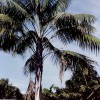 The kentia palm is considered one of the best interior palms for its durability and elegant appearance. The dark green graceful crown of up to three dozen leaves gives it a tropical appearance. Containerized palms can be used on a deck or patio in a shady location or the palm can be planted into the landscape.This 3-page fact sheet was written by Samar Shawaqfeh and Timothy Broschat, and published by the UF Department of Environmental Horticulture, January 2015. (Photo credit: T. K. Broschat)
The kentia palm is considered one of the best interior palms for its durability and elegant appearance. The dark green graceful crown of up to three dozen leaves gives it a tropical appearance. Containerized palms can be used on a deck or patio in a shady location or the palm can be planted into the landscape.This 3-page fact sheet was written by Samar Shawaqfeh and Timothy Broschat, and published by the UF Department of Environmental Horticulture, January 2015. (Photo credit: T. K. Broschat)
http://edis.ifas.ufl.edu/st297
Category: Lawn & Garden
Urban Pests and Pest Management
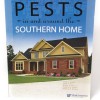 The warm southern states provide an ideal environment for a wide variety of pests — and because almost everyone has problems with pests, most urban areas are sprayed with pesticides. 30 to 40 percent of pesticide use is in urban areas, but most pesticide applications are unnecessary and can result in environmental contamination and human exposure to pesticides. This 5-page fact sheet from Pests in and around the Southern Home introduces integrated pest management practices that can help reduce pesticide use in the home. Written by P.G. Koehler, and published by the UF Department of Entomology and Nematology, October 2013.
The warm southern states provide an ideal environment for a wide variety of pests — and because almost everyone has problems with pests, most urban areas are sprayed with pesticides. 30 to 40 percent of pesticide use is in urban areas, but most pesticide applications are unnecessary and can result in environmental contamination and human exposure to pesticides. This 5-page fact sheet from Pests in and around the Southern Home introduces integrated pest management practices that can help reduce pesticide use in the home. Written by P.G. Koehler, and published by the UF Department of Entomology and Nematology, October 2013.
http://edis.ifas.ufl.edu/in1073
Ten Strategies for Working With Your Home Owner Association to Convert to a Florida-Friendly Yard
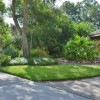 Many homeowners are beginning to rethink their landscapes for several reasons, including mandated water and fertilizer restrictions, increasing maintenance costs, and concern for the environment. But over sixty million people now live in neighborhoods governed by Homeowner Associations, whose regulations can make it difficult to implement some changes by mandating types of plants, percentages of turf and plant material, location of plant materials, and restricting specialty gardens to back yards. More environmentally sound landscapes are possible with careful planning and design and by using an educated and knowledgeable approach to working with the HOA board to gain approval for a new landscape. This 9-page fact sheet offers several strategies for working within HOA regulations to gain approval for a Florida-Friendly landscape. Written by Gail Hansen and Claire Lewis, and published by the UF Department of Environmental Horticulture, February 2015. (Photo credit: Florida-Friendly Landscaping™ Program)
Many homeowners are beginning to rethink their landscapes for several reasons, including mandated water and fertilizer restrictions, increasing maintenance costs, and concern for the environment. But over sixty million people now live in neighborhoods governed by Homeowner Associations, whose regulations can make it difficult to implement some changes by mandating types of plants, percentages of turf and plant material, location of plant materials, and restricting specialty gardens to back yards. More environmentally sound landscapes are possible with careful planning and design and by using an educated and knowledgeable approach to working with the HOA board to gain approval for a new landscape. This 9-page fact sheet offers several strategies for working within HOA regulations to gain approval for a Florida-Friendly landscape. Written by Gail Hansen and Claire Lewis, and published by the UF Department of Environmental Horticulture, February 2015. (Photo credit: Florida-Friendly Landscaping™ Program)
http://edis.ifas.ufl.edu/ep513
What to do about African Honey Bees: A Consumer Guide
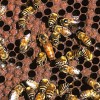 The general public can take several steps to avoid encountering honey bee swarms or colonies. The first and most important step is for citizens to educate themselves and their families about the AHB. This 3-page fact sheet provides links to valuable resources, definitions of key terms, and touches on general precautions and bee-proofing. Written by M. K. O’Malley, J. D. Ellis and A. S. Neal, and published by the UF Department of Entomology and Nematology, October 2014. (Photo: Scott Bauer, USDA/ARS)
The general public can take several steps to avoid encountering honey bee swarms or colonies. The first and most important step is for citizens to educate themselves and their families about the AHB. This 3-page fact sheet provides links to valuable resources, definitions of key terms, and touches on general precautions and bee-proofing. Written by M. K. O’Malley, J. D. Ellis and A. S. Neal, and published by the UF Department of Entomology and Nematology, October 2014. (Photo: Scott Bauer, USDA/ARS)
http://edis.ifas.ufl.edu/in739
Handbook of Florida Fence and Property Law: Trees and Landowner Responsibility
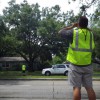 This 3-page fact sheet provides answers to these questions: What is the rule for the removal of a healthy tree on a boundary line? What is the liability for over-hanging branches and encroaching roots? and, Which landowner is responsible for dead or live trees falling on adjoining property? Written by Michael T. Olexa, Eugene E. Shuey, and Patrick H. Todd, and published by the UF Department of Food and Resource Economics, November 2014.
This 3-page fact sheet provides answers to these questions: What is the rule for the removal of a healthy tree on a boundary line? What is the liability for over-hanging branches and encroaching roots? and, Which landowner is responsible for dead or live trees falling on adjoining property? Written by Michael T. Olexa, Eugene E. Shuey, and Patrick H. Todd, and published by the UF Department of Food and Resource Economics, November 2014.
http://edis.ifas.ufl.edu/fe962
Frequently Asked Questions about the Africanized Honey Bee in Florida
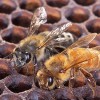 The African honey bee, Apis mellifera scutellata, was introduced into South America from the central and southern part of Africa in 1957. Since its introduction into South America, the African bee has migrated into the southwestern United States and Florida. Apis mellifera scutellata is the African bee subspecies referred to in this 3-page fact sheet, which answers commonly asked questions about these bees and their behavior. Written by M. K. O’Malley, J. D. Ellis and A. S. Neal, and published by the UF Department of Entomology and Nematology, November 2014.
The African honey bee, Apis mellifera scutellata, was introduced into South America from the central and southern part of Africa in 1957. Since its introduction into South America, the African bee has migrated into the southwestern United States and Florida. Apis mellifera scutellata is the African bee subspecies referred to in this 3-page fact sheet, which answers commonly asked questions about these bees and their behavior. Written by M. K. O’Malley, J. D. Ellis and A. S. Neal, and published by the UF Department of Entomology and Nematology, November 2014.
http://edis.ifas.ufl.edu/in738
Pest Identification Guides
Created to help growers and crop consultants, private homeowners, Master Gardeners, and the general public identify common arthropod pests and the damage they inflict, each field guide provides photos of the important life stages and crop damage associated with arthropod pests. The text highlights key general morphology and biology, distribution, and natural enemies. Written by Nicole Casuso and Hugh Smith, and published by the UF Department of Entomology and Nematology, October 2014.
http://edis.ifas.ufl.edu/topic_series_pest_identification_guides
Parana Pine, Araucaria angustifolia: An Ancient-Looking Conifer for Modern Landscapes
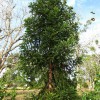 Paraná pine is a primitive-looking conifer valued for its unusual horizontal branching, interesting triangular-shaped needles, and neat, symmetrical form. The primitive appearance of this evergreen tree results from its resemblance to and relationship with an ancient group of Araucaria-related conifers that dominated forests more than 145 million years ago. This tree once covered vast areas in southern Brazil, Argentina and Paraguay. Native Americans harvest the seeds for food. It was an important timber tree for European settlers, and it was logged extensively through the 20th century. Now one of the rarest trees in Brazil, Paraná pine is considered critically endangered due to habitat loss and exploitation. This evergreen conifer grows too large for most residential situations, but is best used as an accent or conversation piece in large-scale landscapes. This 3-page fact sheet was written by Gary W. Knox, and published by the UF Department of Environmental Horticulture, November 2014.
Paraná pine is a primitive-looking conifer valued for its unusual horizontal branching, interesting triangular-shaped needles, and neat, symmetrical form. The primitive appearance of this evergreen tree results from its resemblance to and relationship with an ancient group of Araucaria-related conifers that dominated forests more than 145 million years ago. This tree once covered vast areas in southern Brazil, Argentina and Paraguay. Native Americans harvest the seeds for food. It was an important timber tree for European settlers, and it was logged extensively through the 20th century. Now one of the rarest trees in Brazil, Paraná pine is considered critically endangered due to habitat loss and exploitation. This evergreen conifer grows too large for most residential situations, but is best used as an accent or conversation piece in large-scale landscapes. This 3-page fact sheet was written by Gary W. Knox, and published by the UF Department of Environmental Horticulture, November 2014.
http://edis.ifas.ufl.edu/ep509
Is My Tree Safe? Recognizing Conditions that Increase the Likelihood of Tree Failure
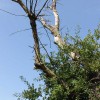 Urban trees provide shade and beauty and the urban forest as a whole provides a wealth of benefits to neighborhoods and residents. But stresses from the urban environment may lead to problems that pose an unacceptable safety risk to people and property. It is a landowner’s responsibility to ensure that the trees on their property are safe. A key step in reducing the potential for tree-related injury or property damage is learning to identify common tree defects associated with increased risk of failure. This 5-page fact sheet highlights seven easily reconizable tree defects that homeowners and non-professionals in public agencies. may encounter in Florida. Written by Drew C. McLean, Andrew K. Koeser, Robert J. Northrop, and Gitta Hasing, and published by the UF Department of Environmental Horticulture, October 2014. (Photo by Gitta Hasing)
Urban trees provide shade and beauty and the urban forest as a whole provides a wealth of benefits to neighborhoods and residents. But stresses from the urban environment may lead to problems that pose an unacceptable safety risk to people and property. It is a landowner’s responsibility to ensure that the trees on their property are safe. A key step in reducing the potential for tree-related injury or property damage is learning to identify common tree defects associated with increased risk of failure. This 5-page fact sheet highlights seven easily reconizable tree defects that homeowners and non-professionals in public agencies. may encounter in Florida. Written by Drew C. McLean, Andrew K. Koeser, Robert J. Northrop, and Gitta Hasing, and published by the UF Department of Environmental Horticulture, October 2014. (Photo by Gitta Hasing)
http://edis.ifas.ufl.edu/ep507
Mosaic Disease of St. Augustinegrass caused by Sugarcane Mosaic Virus
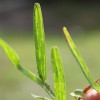 Mosaic disease of St. Augustinegrass was first reported in the 1960s in sugarcane producing areas of Palm Beach County, Florida. In the 10 years prior to 2013, less than 5 samples with mild symptoms were brought to the attention of the extension turfgrass pathologist. But in September 2013, an outbreak of the disease occurred in Pinellas County. Leaf symptoms included mosaic, but turned necrotic and the severe dieback that completely killed some infected lawns. In September 2014, lawns infected in 2013 and new lawns started dying in both Pinellas and Palm Beach Counties. Despite the similarity of symptoms to another St. Augustinegrass decline (SAD), as of November 2014, all samples have tested negative for SAD, and positive for presence of Sugarcane Mosaic Virus. This 3-page fact sheet was written by Phil Harmon, and published by the UF Department of Plant Pathology, November 2014.
Mosaic disease of St. Augustinegrass was first reported in the 1960s in sugarcane producing areas of Palm Beach County, Florida. In the 10 years prior to 2013, less than 5 samples with mild symptoms were brought to the attention of the extension turfgrass pathologist. But in September 2013, an outbreak of the disease occurred in Pinellas County. Leaf symptoms included mosaic, but turned necrotic and the severe dieback that completely killed some infected lawns. In September 2014, lawns infected in 2013 and new lawns started dying in both Pinellas and Palm Beach Counties. Despite the similarity of symptoms to another St. Augustinegrass decline (SAD), as of November 2014, all samples have tested negative for SAD, and positive for presence of Sugarcane Mosaic Virus. This 3-page fact sheet was written by Phil Harmon, and published by the UF Department of Plant Pathology, November 2014.
http://edis.ifas.ufl.edu/pp313
Gulf Coast Tick, Amblyomma maculatum Koch (Acari: Ixodidae: Amblyomminae)
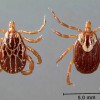 Gulf Coast ticks are found in grass prairies and coastal uplands throughout much of the western hemisphere. The ticks are ectoparasites that feed on a variety of birds and mammals, and will readily bite humans. Gulf Coast ticks are of increasing concern because of their ability to transmit several pathogens of veterinary and medical importance. This 7-page fact sheet was written by Jeffrey C. Hertz and Phillip E. Kaufman, and published by the UF Department of Entomology and Nematology, October 2014. (Photo: Jeffrey C. Hertz, edited by Jane Medley)
Gulf Coast ticks are found in grass prairies and coastal uplands throughout much of the western hemisphere. The ticks are ectoparasites that feed on a variety of birds and mammals, and will readily bite humans. Gulf Coast ticks are of increasing concern because of their ability to transmit several pathogens of veterinary and medical importance. This 7-page fact sheet was written by Jeffrey C. Hertz and Phillip E. Kaufman, and published by the UF Department of Entomology and Nematology, October 2014. (Photo: Jeffrey C. Hertz, edited by Jane Medley)
http://edis.ifas.ufl.edu/in1062
Developing a Soil Test Extractant: The Correlation and Calibration Processes
 An understanding of soil testing is an important part of preventing excess fertilizer applications that can potentially impact the environment and ensuring commercially viable yields and aesthetic, healthy landscapes. This 4-page fact sheet describes the process UF/IFAS soil scientists used to develop a predictive and/or diagnostic soil test that can be depended on by commercial agricultural and horticultural producers as well as homeowners and can provide accurate nutrient recommendations or diagnose nutrient imbalances for crops or plants. Written by George Hochmuth, Rao Mylavarapu, and Ed Hanlon, and published by the UF Department of Soil and Water Science, October 2014.
An understanding of soil testing is an important part of preventing excess fertilizer applications that can potentially impact the environment and ensuring commercially viable yields and aesthetic, healthy landscapes. This 4-page fact sheet describes the process UF/IFAS soil scientists used to develop a predictive and/or diagnostic soil test that can be depended on by commercial agricultural and horticultural producers as well as homeowners and can provide accurate nutrient recommendations or diagnose nutrient imbalances for crops or plants. Written by George Hochmuth, Rao Mylavarapu, and Ed Hanlon, and published by the UF Department of Soil and Water Science, October 2014.
http://edis.ifas.ufl.edu/ss622
Homeowner Best Management Practices for the Home Lawn
 A healthy lawn is an important component of an urban landscape. Loss of turf health and misuse of fertilizers can result increased nonpoint source pollution, so homeowners should use Best Management Practices when maintaining their lawns. Best Management Practices follow Florida-Friendly Landscaping™ principles, developed for maintenance of a healthy landscape that does not contribute to nonpoint source pollution. This 6-page fact sheet provides easy-to-follow tips on Florida-friendly lawn maintenance. Written by Laurie E. Trenholm, and published by the UF Department of Environmental Horticulture, October 2014.
A healthy lawn is an important component of an urban landscape. Loss of turf health and misuse of fertilizers can result increased nonpoint source pollution, so homeowners should use Best Management Practices when maintaining their lawns. Best Management Practices follow Florida-Friendly Landscaping™ principles, developed for maintenance of a healthy landscape that does not contribute to nonpoint source pollution. This 6-page fact sheet provides easy-to-follow tips on Florida-friendly lawn maintenance. Written by Laurie E. Trenholm, and published by the UF Department of Environmental Horticulture, October 2014.
http://edis.ifas.ufl.edu/ep236
Advanced Tree Risk Assessment: Resistance Recording Drills
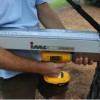 Resistance recording drills are specialized pieces of decay detection equipment that may be used as part of an advanced risk assessment. While not required for tree risk assessment work, resistance recording drills have been shown to be effective in helping arborists detect and document internal tree decay in trees. This 5-page fact sheet was written by Drew McLean, Andrew Koeser, and Gitta Hasing, and published by the UF Department of Environmental Horticulture, October 2014.
Resistance recording drills are specialized pieces of decay detection equipment that may be used as part of an advanced risk assessment. While not required for tree risk assessment work, resistance recording drills have been shown to be effective in helping arborists detect and document internal tree decay in trees. This 5-page fact sheet was written by Drew McLean, Andrew Koeser, and Gitta Hasing, and published by the UF Department of Environmental Horticulture, October 2014.
http://edis.ifas.ufl.edu/ep504
Pool Chemicals and Personal Safety
 Pool chemicals are among the most common household substances and are used to protect health in recreational waters. Pool chemicals containing chlorine safeguard against recreational-water illnesses caused by disease-causing pathogens, such as the diarrhea-causing Cryptosporidium. They also enhance disinfection by regulating water pH. But even though these materials are regularly handled by homeowners, most don’t ever realize that they are handling pesticides. This 3-page fact sheet was written by Fred Fishel, and published by the UF Department of Agronomy, September 2014.
Pool chemicals are among the most common household substances and are used to protect health in recreational waters. Pool chemicals containing chlorine safeguard against recreational-water illnesses caused by disease-causing pathogens, such as the diarrhea-causing Cryptosporidium. They also enhance disinfection by regulating water pH. But even though these materials are regularly handled by homeowners, most don’t ever realize that they are handling pesticides. This 3-page fact sheet was written by Fred Fishel, and published by the UF Department of Agronomy, September 2014.
http://edis.ifas.ufl.edu/pi253
Acoelorrhaphe wrightii: Paurotis Palm
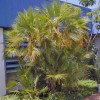 The paurotis or Everglades palm is a clustering, fan-leaved palm with very slender stems. It can reach heights up to 30 feet, with a spread of 20 feet. The light green leaves have blades about 2 feet across on spiny petioles up to 3 feet long. The stems are covered with fibers and persistent leaf bases. In the spring paurotis palms produce large inflorescences of creamy white flowers that extend well beyond the foliage. These are followed in the summer by ¼-inch round fruits that pass through green and orange stages but turn black when completely ripe. Paurotis palms are rather slow-growing and are not tolerant of salt spray. This 3-page fact sheet was written by Timothy K. Broschat, and published by the UF Department of Environmental Horticulture, September 2014.
The paurotis or Everglades palm is a clustering, fan-leaved palm with very slender stems. It can reach heights up to 30 feet, with a spread of 20 feet. The light green leaves have blades about 2 feet across on spiny petioles up to 3 feet long. The stems are covered with fibers and persistent leaf bases. In the spring paurotis palms produce large inflorescences of creamy white flowers that extend well beyond the foliage. These are followed in the summer by ¼-inch round fruits that pass through green and orange stages but turn black when completely ripe. Paurotis palms are rather slow-growing and are not tolerant of salt spray. This 3-page fact sheet was written by Timothy K. Broschat, and published by the UF Department of Environmental Horticulture, September 2014.
http://edis.ifas.ufl.edu/st058
Integrated Pest Management for Mosquito Reduction around Homes and Neighborhoods
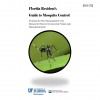 This 40-page publication describes how homeowners can use an integrated pest management (IPM) program to help decrease pesticide use, reduce the risk of contracting mosquito-borne diseases, and ease the financial burden on local governments responsible for area-wide control. Modern mosquito control emphasizes source reduction to eliminate areas where mosquitoes thrive; surveillance to determine whether pesticide applications are necessary; screening; sanitation; and other techniques described in this document. The methods recommended in this publication are particularly effective in reducing mosquitoes that transmit diseases. Homeowners who take responsibility for identifying and eliminating sources of mosquito production around their homes and neighborhoods will improve health and quality of life for all Florida residents. Written by C. R. Connelly, E. Bolles, D. Culbert, J. DeValerio, M. Donahoe, K. Gabel, R. Jordi, J. McLaughlin, A. S. Neal, S. Scalera, E. Toro, and J. Walter, and published by the UF Department of Entomology and Nematology, September 2014.
This 40-page publication describes how homeowners can use an integrated pest management (IPM) program to help decrease pesticide use, reduce the risk of contracting mosquito-borne diseases, and ease the financial burden on local governments responsible for area-wide control. Modern mosquito control emphasizes source reduction to eliminate areas where mosquitoes thrive; surveillance to determine whether pesticide applications are necessary; screening; sanitation; and other techniques described in this document. The methods recommended in this publication are particularly effective in reducing mosquitoes that transmit diseases. Homeowners who take responsibility for identifying and eliminating sources of mosquito production around their homes and neighborhoods will improve health and quality of life for all Florida residents. Written by C. R. Connelly, E. Bolles, D. Culbert, J. DeValerio, M. Donahoe, K. Gabel, R. Jordi, J. McLaughlin, A. S. Neal, S. Scalera, E. Toro, and J. Walter, and published by the UF Department of Entomology and Nematology, September 2014.
http://edis.ifas.ufl.edu/in1045
Pavement ant Tetramorium caespitum (Linnaeus) (Insecta: Hymenoptera: Formicidae)
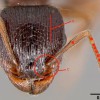 The pavement ant is one of the most commonly encountered ants in the United States. Since first introduced from Europe at the beginning of the nineteenth century, the ant has become well established and is prevalent in urban areas in the northern U.S. and parts of Canada. However, the extent of their invasiveness and severity as a pest is not well characterized. This 5-page fact sheet was written by Tyler Vitone and Andrea Lucky, and published by the UF Department of Entomology and Nematology, September 2014.
The pavement ant is one of the most commonly encountered ants in the United States. Since first introduced from Europe at the beginning of the nineteenth century, the ant has become well established and is prevalent in urban areas in the northern U.S. and parts of Canada. However, the extent of their invasiveness and severity as a pest is not well characterized. This 5-page fact sheet was written by Tyler Vitone and Andrea Lucky, and published by the UF Department of Entomology and Nematology, September 2014.
http://edis.ifas.ufl.edu/in1047
Gardening with Annuals in Florida
 Annuals offer an almost infinite variety of flower color and plant form. They brighten landscape beds and add a splash of color to a porch, deck, or patio when placed in containers. Some also make good cut flowers. This 6-page fact sheet was written by Sydney Park Brown, and published by the UF Department of Environmental Horticulture, August 2014.
Annuals offer an almost infinite variety of flower color and plant form. They brighten landscape beds and add a splash of color to a porch, deck, or patio when placed in containers. Some also make good cut flowers. This 6-page fact sheet was written by Sydney Park Brown, and published by the UF Department of Environmental Horticulture, August 2014.
http://edis.ifas.ufl.edu/mg319
A Parasitoid Wasp Cotesia congregata (Say) (Insecta: Hymenoptera: Braconidae
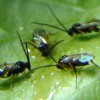 This species of Cotesia has been widely used as a model system in insect physiology. It has also been used to examine insect learning in host-parasitoid-plant interactions. It is an important natural enemy of the tobacco hornworm, a detrimental pest species that feeds on many plants in the Solanaceae (tobacco, pepper, tomato, etc.) family. This 5-page fact sheet was written by Christopher D. Crockett, Andrea Lucky, Oscar E. Liburd, and Karen M. Kester, and published by the UF Department of Entomology and Nematology, July 2014.
This species of Cotesia has been widely used as a model system in insect physiology. It has also been used to examine insect learning in host-parasitoid-plant interactions. It is an important natural enemy of the tobacco hornworm, a detrimental pest species that feeds on many plants in the Solanaceae (tobacco, pepper, tomato, etc.) family. This 5-page fact sheet was written by Christopher D. Crockett, Andrea Lucky, Oscar E. Liburd, and Karen M. Kester, and published by the UF Department of Entomology and Nematology, July 2014.
http://edis.ifas.ufl.edu/in1042